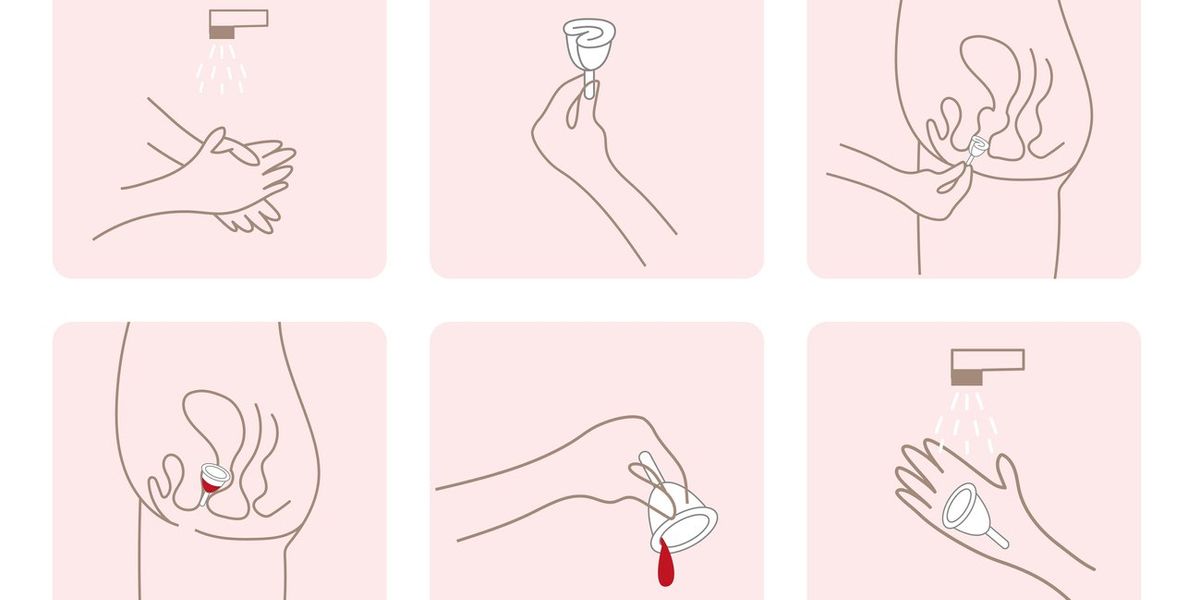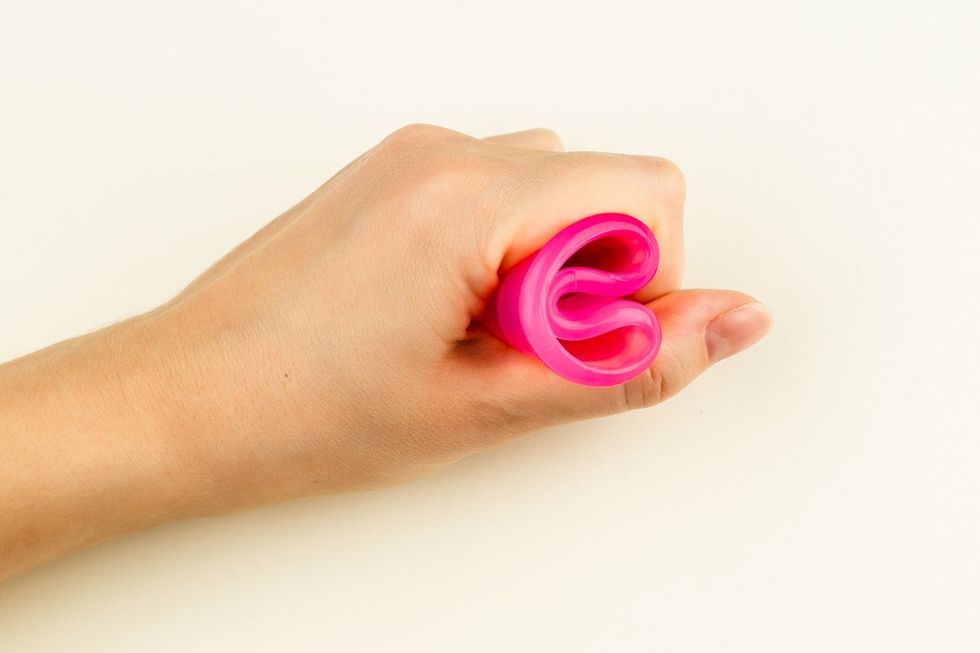
Did you know disposable tampons and pads aren’t the only period products out there? There’s another, more environmentally friendly option available that you may have heard of but don’t know much about. Menstrual cups.
Are you curious about what they are and how they work? Here’s what you need to know if you’re thinking about making the switch to a menstrual cup.
What is a menstrual cup and why try one?
Menstrual cups are small, flexible, non-toxic and non-allergenic cup-shaped devices with a short stem. They’re made from a soft silicone material, and are inserted into the vagina to collect menstrual effluent — that’s the technical name for blood, vaginal secretions and endometrial cells you shed during your period. Instead of being thrown away each time you use them, menstrual cups are emptied, cleaned and reused.
Since menstrual cups are reusable and don’t use plastic, which never breaks down, or cotton, which takes a lot of resources to manufacture, they’re more environmentally friendly than disposable products.
And they’re easier on your wallet, too. At first, menstrual cups may cost more than a box of pads or tampons, but they can last up to 10 years, depending on your particular cup. So, in the long run, they’re more affordable than disposable products you have to buy on the regular.
Read: The Price of Period Poverty >>
Are menstrual cups safe?
Menstrual cups, which have been around since the 1800s, are considered safe. In fact, a recent comprehensive analysis of research on menstrual cups found no health risks associated with menstrual cups. It also found that they’re just as good at preventing leaks as pads and tampons. And, since they don’t absorb blood, they remove the risk of toxic shock syndrome that comes with tampons. They also hold a lot more menstrual effluent than pads and tampons and can be changed less frequently.
Who can wear a menstrual cup?
Almost anyone who has a period can wear a menstrual cup, but talk to your healthcare provider if you’re thinking about making the switch, especially if you:
Do menstrual cups hurt?
Wearing a menstrual cup shouldn’t be uncomfortable when it’s inserted properly. They come in different sizes, and the right size cup should feel snug without pain or discomfort.
You may have to try a few to get the right fit. Smaller sizes are usually a good fit for people who are younger and people who have strong vaginal muscles or a low-sitting cervix. Larger sizes usually work best for people with heavier flows or people who have given birth vaginally.
How do you use a menstrual cup?
There are different techniques for inserting a menstrual cup but they all involve folding the cup and sliding it into your vagina. Each cup will come with instructions on how to best use it, and with time, you will find a fold that works best for you and your preferred cup.
If you’re used to inserting a tampon, inserting a menstrual cup won’t be that different.
Always start by washing your hands. You can apply water-based lubricant to the cup’s exterior or wet it to help it slide in. Cups form a seal after they’re correctly inserted by popping open inside. You can feel around the bottom of the cup to make sure it has popped open.
If it’s your first time using a menstrual cup, it can take some practice to master, so be patient with yourself.
- Fold the cup using the method that works best for you or your particular cup. (See two popular folds below.)
- With the rim facing up, insert the cup into your vagina the way you would insert a tampon. Once it’s inside your vagina, rotate the cup and push the base to open it.
Punch down fold
iStock.com/AnSyvanych
This is a beginner-friendly fold with a smaller insertion size that works well for soft cups that may not pop open as easily when inserted. Use your finger on the rim to push down one side of the cup to the middle bottom.
C fold/U fold

iStock.com/AnSyvanych
The C/U fold is a common fold that is often found in cup instruction booklets. It can be done with one hand, but it’s a bit trickier for beginners and has a larger insertion size.
Use your index finger to push the entire side of your cup toward the opposite side and squeeze the cup together. It will look like a C or U.
How to remove a menstrual cup
Menstrual cups should be removed at least twice a day. They should be washed before you insert them back into your vagina.
- Wash your hands first.
- Try to relax so removal is easier, and don’t yank on the stem of the cup.
- If you can’t feel the base, feel for the stem and use a gentle wiggling or twisting motion to pull the cup down. If you’re having trouble, you can squeeze your muscles as if you’re trying to poop to encourage the cup to move down lower.
- Pinch the base of the cup to break the seal, and pull it downward. Make sure you’re over the toilet so you can just tilt it to empty into the toilet.
Are there any disadvantages to using a menstrual cup?
Menstrual cups can take some getting used to and some practice is likely necessary to make sure you can insert it correctly. If you don’t insert the cup properly, it can leak. It’s also hard to tell when your cup is full. Although the cup can be left in place for up to 12 hours, you may want to empty it more frequently to prevent leaks.
From Your Site Articles
Related Articles Around the Web
Credit : Source Post







